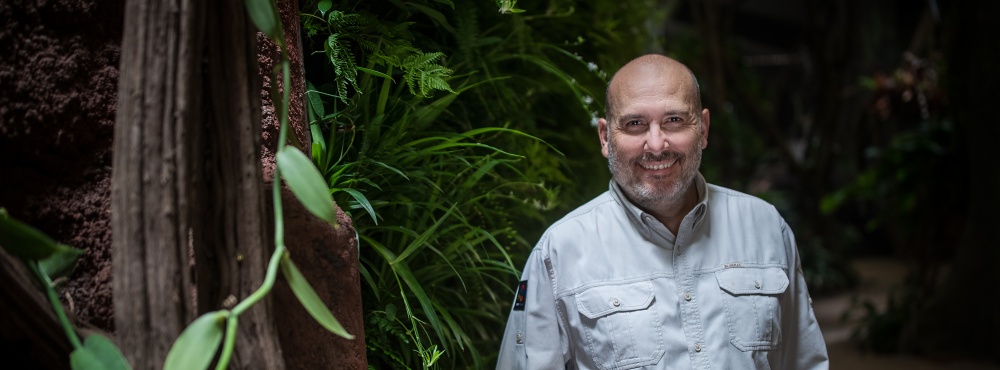Tarantulas. Big, small, even tender ...

When I was nine or ten, I got a paperback book with a white cover. It was written by John Crompton and was called The Life of a Spider. I read it repeatedly at primary school, but I even browsed through it at university, just before my exam under Professor Buchar. Not that I learnt from it, not at all, but thanks to the interest it generated in me, even the taxonomy of arachnids became all the more engrossing.
 Monocentropus balfouri s mláďaty, foto: David Šťastný
Monocentropus balfouri s mláďaty, foto: David Šťastný
In short, Crompton’s The Life of a Spider brought me onto the side of spider admirers, so I shouldn't be surprised by the interest generated by our tarantula exhibition or the tarantulas themselves. However, I was surprised by both. I certainly didn't expect such an interest in the exhibition, and I myself pop down to look at the tarantulas whenever I can. Whilst there I always learn something new about them, facts that fill me with the same amazement as the best passages from Crompton’s book.
The breeder and arachnologist, David Šťastný, has lent the zoo a total of sixty tarantula species. Among them are species that live in trees, on the ground and underground, some quite common and some extremely rare, some distinctly coloured, others drably brown, some small and some large.
Probably the greatest attention grabber for visitors is the female Theraphosa stirmi, which is called Didla. With her legs fully spread, she could be the size of a dinner plate. But I always look at the terrarium that is directly below her. It holds a group of “balfouris”, and as I was writing about the amazement that tarantulas invoke in me, it was this species in particular that I had in mind.
This balfouri (Monocentropus balfouri), only lives on the island of Sokotra and is one of the larger and more distinctly coloured species. The females reach up to 17 centimeters and have a blue-green cephalothorax. Moreover, we were able to discover something absolutely fascinating about them. Not only do the females take care of the cocoon with its eggs, but they also feed their spiderlings. Yes, they feed them! Small spiders swarm around her dangerous chelicerae whilst the female - and she seems to do so lovingly - provides them with food. Well, would you ever have expected something of this nature from a spider? I certainly didn’t, and neither did John Crompton.
It is also important, however, to remember who recently discovered this astonishing, as yet unknown, behaviour. It was none other than the producer of our exhibition, David Šťastný.
Miroslav Bobek
Director of Prague Zoo
ZOOPRAHA.CZ
Contacts
- The Prague zoological garden
U Trojskeho zamku 120/3
171 00 Praha 7
Phone.: (+420) 296 112 230 (public relations department)
e-mail: zoopraha@zoopraha.cz
Others








